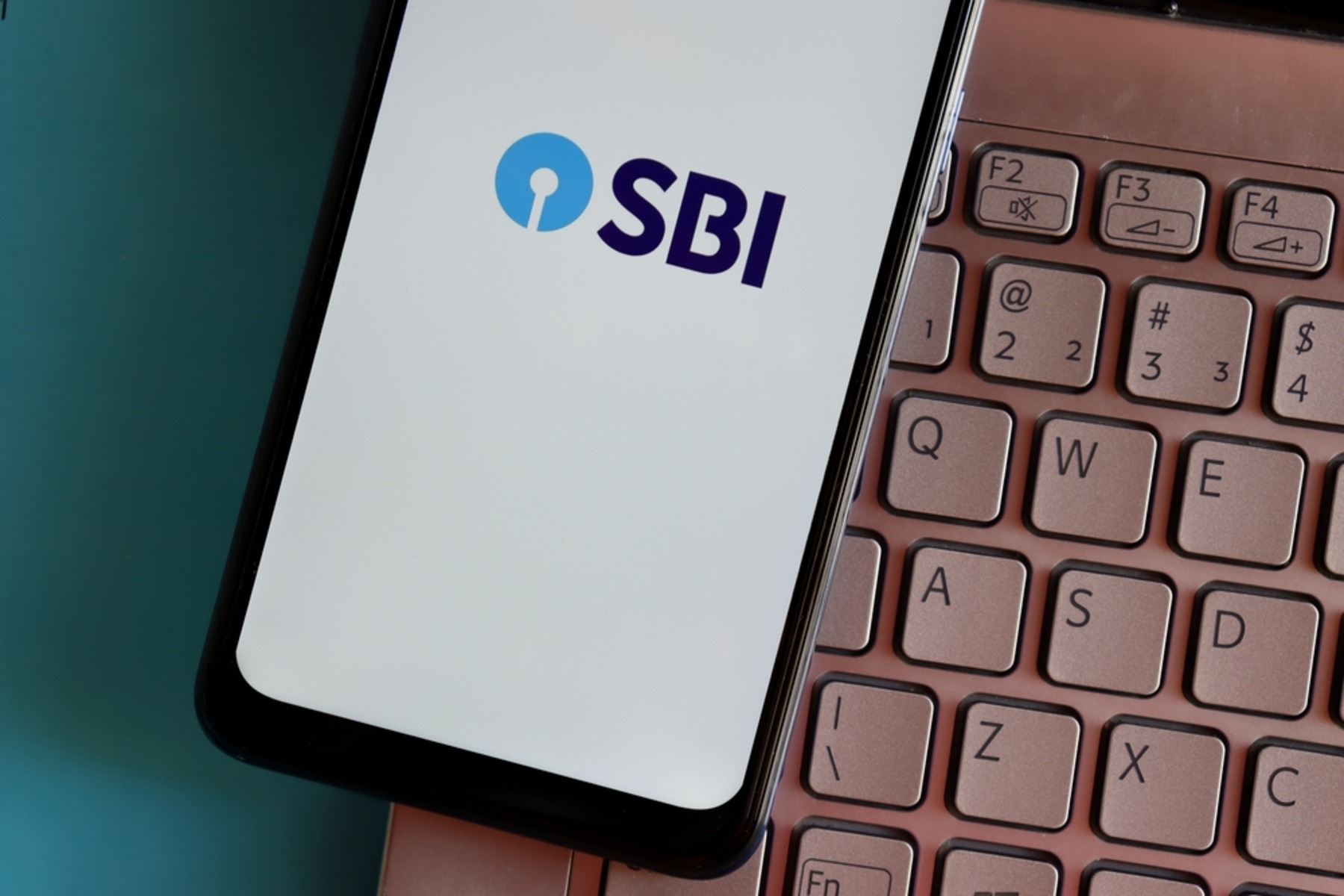Introduction
Welcome to the world of online banking with the State Bank of India (SBI). With the convenience of SBI’s online banking platform, you can easily transfer money from the comfort of your own home. No longer do you have to make trips to the bank or wait in long queues; SBI online banking empowers you to transfer money quickly and securely with just a few clicks.
In this article, we will guide you through the process of transferring money online using SBI’s user-friendly online banking platform. Whether you need to send money to a friend, pay bills, or make a business transaction, SBI online banking provides a seamless experience.
Before diving into the steps, it is important to note that you’ll need an active SBI online banking account to perform money transfers. If you haven’t already set up your online banking account, don’t worry! We’ll walk you through the process in the next section.
Transferring money online is not only convenient but also secure. SBI’s online banking platform employs state-of-the-art security measures to ensure that your personal and financial information remains safe at all times. Plus, with the ability to track your transfer in real-time, you’ll have peace of mind knowing exactly where your money is every step of the way.
So, let’s get started on our journey to learn how to transfer money in SBI online! Follow the simple steps we’ll outline in the upcoming sections, and you’ll be able to transfer money with ease and confidence.
Step 1: Setting up your SBI online banking account
Before you can transfer money online with SBI, you need to have an active online banking account. Follow these steps to set up your SBI online banking account:
- Visit the official SBI website and click on the “New User Registration” button.
- Read and accept the terms and conditions for online banking.
- Enter your account number, CIF number, and branch code. You can find these details on your bank passbook or account statement.
- Create a username and password for your online banking account. Make sure to choose a strong password that combines letters, numbers, and special characters.
- Verify your mobile number and email address by entering the OTP (One-Time Password) sent to you.
- Once your registration is complete, you can log in to your SBI online banking account using your newly created username and password.
- After logging in, you will be prompted to create a profile password and set up security questions. These additional layers of security help protect your account from unauthorized access.
- Finally, you will be asked to enter your debit card details to link it with your online banking account. Follow the instructions to complete the card verification process.
Once you have successfully set up your SBI online banking account, you can proceed to the next step of adding a beneficiary for money transfers.
It is important to ensure that your online banking account is secure by regularly updating your passwords, enabling two-factor authentication, and being cautious of phishing attempts.
Now that you have your SBI online banking account set up, let’s move on to the next step of adding a beneficiary.
Step 2: Adding a beneficiary
In order to transfer money to someone through SBI online banking, you need to add them as a beneficiary. Adding a beneficiary allows you to securely transfer funds to their account whenever needed. Follow these steps to add a beneficiary:
- Log in to your SBI online banking account using your username and password.
- From the dashboard, navigate to the “Payments/Transfers” section. You may find it under different names such as “Fund Transfers,” “Manage Beneficiaries,” or “Add Payee.”
- Click on the option to “Add a new beneficiary” or “Add payee.”
- Choose the type of account the beneficiary has, such as “SBI Account” or “Other Bank Account.”
- Provide the beneficiary’s name, account number, and IFSC code if it’s an account from another bank. The IFSC code can usually be found on the beneficiary’s bank statement or by searching for it online.
- Double-check all the information provided to ensure its accuracy and click on “Add” or “Submit.”
- Once the beneficiary is added, you may need to authenticate the addition using an OTP sent to your registered mobile number or through other security measures such as your profile password.
- After authentication, the beneficiary will be added to your account, and you can start transferring money to their account.
It’s important to note that there may be limits on the number of beneficiaries you can add and the amount you can transfer to them within a certain time period. These limits are set by SBI as a security measure.
Now that you have successfully added a beneficiary, you can proceed to the next step of initiating a money transfer.
Step 3: Initiating a money transfer
Once you have set up your SBI online banking account and added a beneficiary, you are ready to initiate a money transfer. Follow these steps to start transferring funds:
- Log in to your SBI online banking account using your username and password.
- From the dashboard, navigate to the “Payments/Transfers” section or a similar option, depending on the layout of your online banking interface.
- Select the option to “Transfer Funds” or “Make a Transfer.”
- Choose the beneficiary you want to transfer money to from the list of added beneficiaries. If the beneficiary is not listed, you may need to add them as described in the previous step.
- Enter the amount you wish to transfer. Make sure to double-check the amount to avoid any errors.
- Select the account from which you want to transfer the funds. If you have multiple accounts linked to your online banking, choose the appropriate one.
- Choose the purpose of the transfer, such as “Personal,” “Business,” or “Bill Payment.”
- Review the details of the transfer, including the beneficiary’s information, the amount, and the purpose. Make any necessary changes if required.
- Click on “Submit” or “Transfer” to initiate the money transfer.
- Depending on the transfer method you choose, you may need to authenticate the transaction using an OTP, your profile password, or other security measures.
- After the transfer is initiated, you will receive a confirmation with a transaction reference number. Make sure to note this number down for future reference.
SBI online banking allows you to transfer money instantly or schedule a future transfer for a specific date and time. Choose the option that suits your needs.
Now that you have successfully initiated a money transfer, you can proceed to the next step of choosing the transfer method.
Step 4: Choosing the transfer method
When transferring money through SBI online banking, you have the option to choose the transfer method that best fits your needs. SBI offers multiple transfer options to cater to different situations. Follow these steps to select the appropriate transfer method:
- Log in to your SBI online banking account using your username and password.
- From the dashboard, navigate to the “Payments/Transfers” section or a similar option.
- Choose the transfer method that suits your requirements. SBI provides various options such as:
- Immediate Payment Service (IMPS): This method allows for instant transfer of funds 24/7, including weekends and holidays. It is ideal for urgent transfers.
- Real-Time Gross Settlement (RTGS): RTGS is used for high-value transfers and ensures real-time credit to the beneficiary’s account. Note that there is a minimum amount threshold for RTGS transfers.
- National Electronic Funds Transfer (NEFT): NEFT is used for low to medium value transfers and operates in hourly batches during bank business hours.
- Banking Points: SBI also provides the option to transfer money through their banking points or cash deposit machines located in various branches.
- Select the transfer method of your choice and proceed to the next step.
- Depending on the transfer method, you may need to provide additional details, such as transaction codes or specific instructions. Follow the on-screen prompts and provide the necessary information.
- Review the details of the transfer, including the transfer method, beneficiary information, and amount. Make any necessary changes if required.
- Click on “Submit” or “Transfer” to proceed with the chosen transfer method.
- Authenticate the transaction using an OTP, your profile password, or any other security measures required by SBI.
- Once the transaction is completed, you will receive a confirmation message with the transaction reference number. Keep this number for future reference.
Choosing the appropriate transfer method ensures that your funds are transferred efficiently and securely. Consider factors such as urgency, transaction amount, and timing when selecting the transfer method.
Now that you have chosen the transfer method, you can proceed to the next step of confirming the transfer details.
Step 5: Confirming the transfer details
Confirming the transfer details is a crucial step in ensuring the accuracy of your money transfer through SBI online banking. By thoroughly reviewing the information before finalizing the transaction, you can avoid any potential errors or discrepancies. Follow these steps to confirm the transfer details:
- Log in to your SBI online banking account using your username and password.
- Navigate to the “Payments/Transfers” section or a similar option, depending on the layout of your online banking interface.
- Choose the relevant transaction or transfer option that you initiated in the previous steps.
- Review the transfer details, including the beneficiary’s information, transfer method, amount, and any additional instructions or codes provided.
- Double-check all the information for accuracy, paying close attention to the beneficiary’s account number, IFSC code, and transfer amount. Ensure that you have selected the correct transfer method as well.
- If you need to make any changes to the transfer details, there is usually an option to edit or modify the transaction. Follow the prompts to make the necessary corrections.
- Once you are certain that all the transfer details are correct, click on the “Confirm” or “Proceed” button to finalize the transaction.
- Authenticate the transaction by entering the OTP (One-Time Password) sent to your registered mobile number or by using your profile password or any other security measures required by SBI.
- After confirming the transfer, you will receive a confirmation message displaying the transaction reference number. Make a note of this number for future reference.
Confirming the transfer details ensures that your funds are being transferred accurately and to the intended recipient. It is essential to be diligent and thorough during this step to avoid any potential errors.
Now that you have successfully confirmed the transfer details, you can proceed to the next step of authenticating the transfer.
Step 6: Authenticating the transfer
Authenticating the transfer is a crucial step in ensuring the security and integrity of your money transfer through SBI online banking. SBI has implemented various security measures to protect your account and funds, and you may be required to go through an additional authentication process before the transfer is finalized. Follow these steps to authenticate the transfer:
- Log in to your SBI online banking account using your username and password.
- Navigate to the “Payments/Transfers” section or a similar option, depending on your online banking interface.
- Locate the specific transaction or transfer that you initiated in the previous steps.
- Check if any additional authentication step is required. This could involve entering an OTP (One-Time Password) sent to your registered mobile number, using your profile password, or any other security measure implemented by SBI.
- Complete the authentication process by providing the required information or following the indicated steps.
- Once the authentication is successfully completed, the transfer will be processed and the funds will be debited from your account and credited to the beneficiary’s account.
- You will receive a confirmation message with the transaction reference number and details of the transfer.
- Make sure to note down the transaction reference number for future reference or any inquiries you may have regarding the transfer.
Authenticating the transfer ensures that only authorized individuals can initiate and complete fund transfers through your SBI online banking account. It adds an additional layer of security to protect your account and funds from fraudulent activities.
Now that you have successfully authenticated the transfer, you can proceed to the final step of tracking the transfer status.
Step 7: Tracking the transfer status
After completing a money transfer through SBI online banking, it’s important to track the status of the transfer to ensure it has been processed successfully. Tracking the transfer provides you with peace of mind and allows you to stay informed about the progress of your transaction. Follow these steps to track the transfer status:
- Log in to your SBI online banking account using your username and password.
- Navigate to the “Payments/Transfers” section or a similar option, depending on your online banking interface.
- Look for the “Transfer History” or “Transaction History” tab, where you can find a record of your recent transfers.
- Locate the specific transfer you want to track and click on it to view the details.
- In the transfer details, you will find information such as the transaction reference number, date and time of the transfer, and the status of the transfer.
- The status of the transfer can vary based on the transfer method and processing time. Common status indicators include “Pending,” “In Process,” “Successfully Transferred,” or “Rejected.”
- If the transfer status is “Successfully Transferred,” the funds have been credited to the beneficiary’s account.
- If the transfer status is “Pending” or “In Process,” it means that the transfer is still being processed. In such cases, you may need to wait until the status changes to “Successfully Transferred.”
- If the transfer status is “Rejected,” it indicates that the transfer was unsuccessful. In such cases, you may need to review the details and try initiating the transfer again, or contact SBI customer support for further assistance.
- Take note of the transfer status and any additional information provided for future reference or follow-up purposes if needed.
Tracking the transfer status allows you to stay updated on the progress and completion of your money transfer. If you encounter any issues or concerns regarding the status of the transfer, don’t hesitate to reach out to SBI customer support for clarification and assistance.
Now that you have learned how to track the transfer status, you have successfully completed all the steps involved in transferring money through SBI online banking.
Conclusion
Congratulations! You have successfully learned how to transfer money through SBI online banking. By following the step-by-step process outlined in this guide, you can now transfer funds conveniently and securely from the comfort of your own home.
We started by setting up your SBI online banking account, ensuring that you have a secure and reliable platform to manage your finances. Then, we walked you through the process of adding a beneficiary, allowing you to easily send money to individuals or organizations of your choice.
Next, we guided you through the steps of initiating a money transfer, giving you the flexibility to transfer funds whenever required. We also explored the various transfer methods offered by SBI, enabling you to choose the most suitable option for your specific needs.
Additionally, we emphasized the importance of confirming the transfer details to avoid any errors or discrepancies. We also discussed the crucial step of authenticating the transfer, enhancing the security of your online transactions.
Lastly, we highlighted the significance of tracking the transfer status, providing you with the ability to stay informed about the progress of your transactions and ensuring that your funds reach the intended recipients.
By mastering the process of transferring money using SBI online banking, you have unlocked a new level of convenience and efficiency in managing your finances. The flexibility, security, and ease of use offered by SBI’s online banking platform empower you to take control of your financial transactions.
Should you encounter any difficulties or have any questions along the way, don’t hesitate to reach out to SBI’s customer support team for assistance. They are there to help you with any concerns or uncertainties you may have.
Now, go ahead and confidently embrace the benefits of SBI online banking as you effortlessly transfer money to friends, family, business associates, or pay bills with just a few clicks.

























